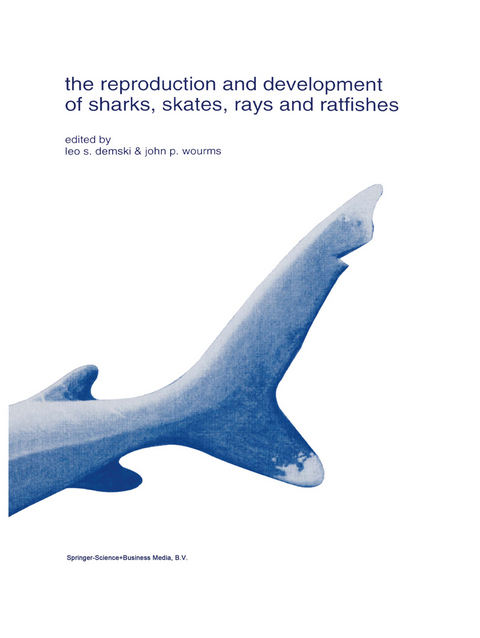
The reproduction and development of sharks, skates, rays and ratfishes
Springer (Verlag)
978-90-481-4330-6 (ISBN)
The reproduction and development of sharks, skates, rays and ratfishes: introduction, history, overview, and future prospects.- Fish imagery in art 52: Ellis’ Megamouth shark.- 1. Reproductive ecology and life history.- Geographic variation in reproduction between two populations of the bonnethead shark, Sphyrna tiburo.- The shark nursery of Bulls Bay, South Carolina, with a review of the shark nurseries of the southeastern coast of the United States.- Age and length at maturity of the female spiny dogfish, Squalus acanthias, in the Strait of Georgia, British Columbia, Canada.- Reproductive biology of the slender smoothhound, Gollum attenuatus, collected from New Zealand waters.- New data on the reproductive biology of the thorny stingray, Dasyatis centroura (Pisces: Dasyatidae) from off the Tunisian coast.- Reproductive biology of the guitarfish, Rhinobatos hynnicephalus.- Reproductive biology of lamnoid sharks.- 2. Structure and function of the reproductive system.- Predation on elasmobranch eggs.- Structure and functions of the genital ducts of the male Port Jackson shark, Heterodontus portusjacksoni.- The storage of spermatozoa in the oviducal glands of western North Atlantic sharks.- Stabilization and sclerotization of Raja erinacea egg capsule proteins.- Pre-copulatory behaviour of captive sandtiger sharks, Carcharias taures.- 3. Neural and endocrine control of reproduction.- Serum concentrations of reproductively-related circulating steroid hormones in the free-ranging lemon shark, Negaprion brevirostris.- Ovarian steroid synthesis and the hormonal control of the elasmobranch reproductive tract.- Morpho-functional aspects of the hypothalamus-pituitary-gonadal axis of elasmobranch fishes.- Gonadotropin-releasing hormone in cartilaginous fishes: structure,location, and transport.- Gonadotropin-releasing hormone (GnRH) pathways and reproductive control in elasmobranchs.- Clasper control in the round stingray, Urolophus halleri: lower sensorimotor pathways.- 4. Embryonic development and viviparity.- Ionic and osmotic environment of developing elasmobranch embryos.- Yolk utilization in Scyliorhinus canicula, an oviparous dogfish.- Ontogeny of the umbilical cord and placenta in the Atlantic sharpnose shark, Rhizoprionodon terraenovae.- Maximization of evolutionary trends for placental viviparity in the spadenose shark, Scoliodon laticaudus.- 1. Species and subject index.
| Erscheint lt. Verlag | 5.12.2010 |
|---|---|
| Reihe/Serie | Developments in Environmental Biology of Fishes ; 14 |
| Zusatzinfo | 3 Illustrations, color; 103 Illustrations, black and white; 301 p. 106 illus., 3 illus. in color. |
| Verlagsort | Dordrecht |
| Sprache | englisch |
| Maße | 210 x 279 mm |
| Themenwelt | Naturwissenschaften ► Biologie ► Evolution |
| Naturwissenschaften ► Biologie ► Zoologie | |
| ISBN-10 | 90-481-4330-6 / 9048143306 |
| ISBN-13 | 978-90-481-4330-6 / 9789048143306 |
| Zustand | Neuware |
| Haben Sie eine Frage zum Produkt? |
aus dem Bereich


